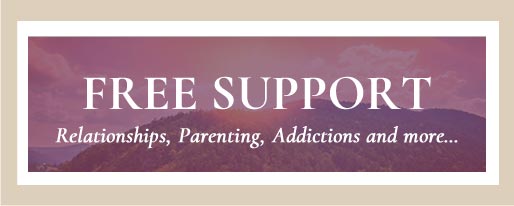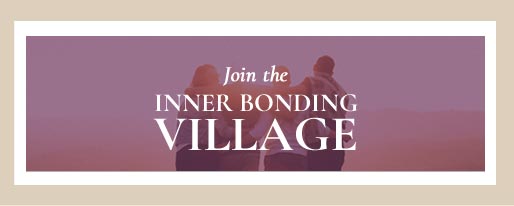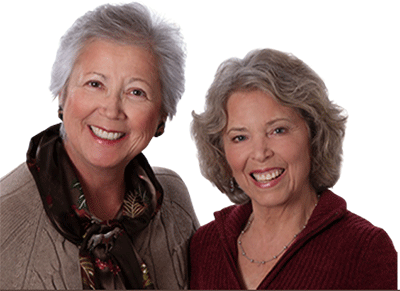Deadly Force
By Sharon PearsonNovember 14, 2013
Codependency is a personal/relational/systemic disease. It is "contagious" and it is a progressive dis-ease.
Deadly Force
By Sharon Clark Pearson
Debbie is angry and frustrated. She has invested so much time and energy helping her cousin Brittany to start making some much-needed changes in her personal life. And now Brittany is sabotaging all that has been accomplished. She has given some of the funds she needed for a business project to her sister, Amanda--who is constantly creating crisis and expecting family to rescue her. Brittany is angry with Amanda, and resents the fact that she has given money one more time when she is financially in jeopardy. Debbie is upset and withdrawing from Brittany. And Amanda is no better off than the many other times she “borrowed” funds because she is not managing her own life. Amanda is irritated at Brittany for her negative energy when she gave the gift. Brittany is anxious about the fact that Debbie is withdrawing. And Debbie is remembering the other times she has tried to help Brittany. Each is feeling victimized and aggrieved.
Codependency is a personal/relational/systemic disease. It is “contagious” and it is a progressive dis-ease. It is as destructive to life and health as any other disease. It is often passed down through family and culture. Co-dependency often begins in childhood (modeling, role casting, and survival strategy) and can warp and ruin whole lifetimes if not addressed. On a personal level, codependency functions as a handicap. It functions as a destructive pattern in relationships. It can distort the good potential of families, even well-intentioned families. It can cause the collapse of whole cultures.
Why is codependency so destructive? Why does it hurt so much? First, codependency takes the inborn gift of empathy and distorts it into a victimization process—for all persons in the exchange. Feeling another’s pain is a gift. It is a positive good to feel with and for another. Such a capacity is necessary to life and growth. In fact, empathic capacity is the bedrock of human connections; a child can survive almost anything and be emotionally and mentally healthy IF they have at least one empathic connection with a consistently available adult. Because empathic connection is so foundational to life and relationships, it is capable of great good.
But, the power of empathy also can be perverted in ignorance, (and even in cases of feigned caring with the intent to control or destroy). For example, when Brittany consistently takes on the pain of another adult, her sister Amanda, as a pattern, excusing or ignoring her neglectful or abusive behaviors, both women can forget the point of the pain. Pain is a gift and a teacher. It lets us know that something is going wrong and is hurtful and needs to be changed. The true value of sharing pain is not to “unload” it, but to learn from it! The true purpose of empathy is to create positive good for all parties.
A pattern of interrupting or absolving the pain of another actually can be counter-productive. Oftentimes the person on the receiving end of the co-dependent pattern (rescue efforts) feels victimized and resentful in the pattern as well! They may well be experiencing the push/pull, controlling energy of the “rescuer” who has an agenda for them; even “niceness” can feel like control.
Pain is part of the created order. It is the message that a thought, a choice, a behavior, or a practice is “not working” or damaging. So, alleviating another’s pain and interrupting pain’s purpose, especially as a continual practice, may actually get in the way. The person or a group needs to hear the very important message of the pain and apply a healthy corrective.
Usually it is not the conscious intent of a “helper” to do harm in response to another’s pain! The person desiring to love and support others does not propose to damage them by stepping in to resolve their pain. But when destructive patterns with foul consequences are in place, interrupting the pain message slows down or interferes with the real change that is needed--the real healing that is required. It is like putting a Band-Aid on cancer. In these cases, especially when chronic pain or distress is present, learning from the pain is the life-saving goal! To enable another to prolong or abort the learning process motivated by pain will inevitably bring greater dysfunction, denial, and pain to them. Denial is the biggest symptom of any established dysfunction. What is NOT learned usually makes for deeper denial of a problem and lack of response-ability. Then even more damage accrues over time.
Feeling with and for another person who is in deep pain is very distressing! To not respond by “helping” may feel intolerable. Caring and compassion are costly— whether doing or not doing anything! To allow someone the right to his or her own pain and to his or her own timetable for learning is hard. To stand by and watch another in pain brings up feelings of helplessness and even hopelessness. Those are difficult feelings; most of us have expended considerable effort avoiding these particular feelings. Most of us want control over that which causes such distress. We want power over pain—our own and other’s. For someone who truly and naturally wants to be loving and helpful, another’s presenting need can feel like a mandate to act: “I must help, I need to help!” But, if that desire to help becomes a “fix” for either party in the exchange, the result can damage or prohibit growth and health rather than be true life-support. The desire to control pain, in this case, is the problem.
For all parties involved, the inevitable pain that comes as a result of personal and relational choices must be welcomed as a teacher, as the “goad” to good. Healing, maturity, and peace of mind and heart are only accomplished as each one learns from the pain what needs to be changed. One who feels like a victim can ask the question “What could I do differently if I were to take responsibility for my pain and my choices?” “In what ways am I contributing to this pain?” “What kinds of support do I need to make a different choice?” And finally, all can ask the question, “What is truly in the highest good of us all?” As we ask these questions in steps three and four of Inner Bonding, and then take action, we are addressing pain in the only way that makes a world of difference… from the inside out!”
 Send this article to a friend
Send this article to a friend  Print this article
Print this article  Bookmarked 1 time(s)
Bookmarked 1 time(s)
Comments
| Author | Comment | Date |
|---|---|---|
| Join the Inner Bonding Community to add your comment to articles and see the comments of others... | ||

Daily Inspiration
The challenge on the spiritual path is to reach such a deep place of inner security that we are able to stay open to learning with ourselves and with Spirit, no matter what. This means being able to be loving to ourselves in the face of others attacking, blaming, crazymaking, withdrawing. It means staying open to learning with Spiritregarding our own highest good and the highest good of all, no matter what.
By Dr. Margaret Paul

 Share with Del.icio.us
Share with Del.icio.us Share with Digg
Share with Digg







